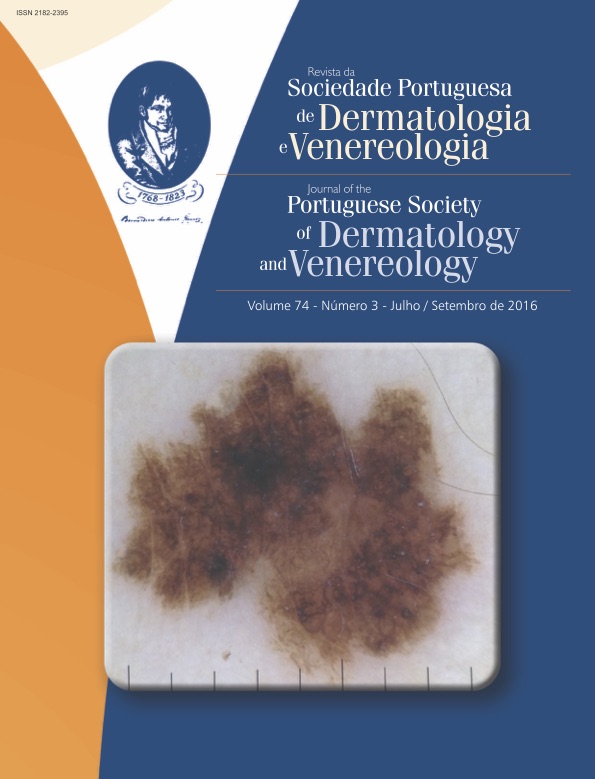Eczema Crónico das Mãos Relacionado com Alergia de Contacto a Lactonas Sesquiterpénicas e Partenolido
Resumo
As dermatites de contacto alérgicas por plantas podem manifestar-se sob padrões clínicos diversos. Descrevemos o caso clínico de doente do sexo feminino, de 63 anos com eczema das mãos. Perante a suspeita clínica de dermatite de contacto alérgica efectuaram-se provas epicutâneas com as séries básica (Grupo Português de Estudo das Dermites de Contacto - GPEDC) e de plantas, que revelaram positividades para a mistura de lactonas sesquiterpénicas 0,1% vas (++) e partenolido 0,1% vas. (++) em D2 e D4, o que permitiu o diagnóstico de alergia do contacto ao partenolido relacionada com a exposição ocupacional à planta margaça-de-inverno (Chamaemelum fuscatum) nas atividades de jardinagem. Salienta-se a importância de uma anamnese exaustiva para aumentar o nível de suspeição de dermatite de contacto alérgica e avaliar a relevância dos testes positivos a lactonas sesquiterpénicas e ao partenolido, como agentes etiológicos em casos de eczema crónico das mãos.
Downloads
Referências
Jean L. Bolognia, Dermatology. 3rd ed. Amsterdam: Elsevier;
Gonçalo M. Dermatosis profesionales por plantas e maderas.
In: Conde-Salazar Gómez L, Ancona Alayón A, editores. Dermatosis Profesionales. Barcelona: Menarini Área Científica; 2000. p.121-8.
De D, Jindal R, Kanwar AJ. Contact dermatitis to parthenium simulating lichen nitidus. Indian J Dermatol Venereol Leprol 2010; 76:286-8.
Chamaemelum fuscatum [consultado a 21 de Abril de 2016]. Disponível em: http://flora-on.pt/index.php? q=Chamaemelum+fuscatum
Sharma VK, Verma P. Parthenium dermatitis in India: Past, present and future. Indian J Dermatol Venereol Leprol 2012; 78:560-8.
Killoran C. Two cases of compositae dermatitis exacerbated
by moisturizer containing feverfew. Dermatitis. 2007; 18:225-9.
Paulsen E, Christense LP, Fretté XC, Andersen KE. Patch test reactivity to feverfew – containing creams in feverfew allergic patients. Contact Dermatitis 2010; 63:146-50.
Orion, E, Paulsen E, Andersen KE, Menné T. Comparison of simultaneous patch testing with parthenolide and sesquiterpene lactone mix. Contact Dermatitis. 1998; 38:207-8.
Paulsen E, Andersen KE, Hausen BM. An 8-year experience with routine SL mix patch testing supplemented with Compositae mix in Denmark. Contact Dermatitis. 2001; 45:29-35.
Bong JL, English JS, Wilkinson SM. Diluted Compositae mix versus sesquiterpene lactone mix as a screening agent for Compositae dermatitis: a multicentre study. Contact Dermatitis. 2001; 45:26-8.
Todos os artigos desta revista são de acesso aberto sob a licença internacional Creative Commons Attribution-NonCommercial 4.0 (CC BY-NC 4.0).








